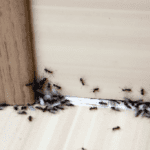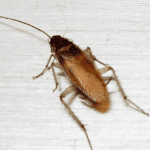Wood carp: Everything you need to know

December 30, 2022
/
Wood carp: Everything you need to know
Wood carp: Everything you need to know
Because we may not have realized that our wood has been attacked by wood-eating insects (bark) until the damage becomes quite obvious, it is very useful to know its signs in order to have an early diagnosis and treatment of the problem. There are different types of wood-eating insects that attack different types of wood, but they all leave the same marks. The first signs of scabies:- Small holes in wood: round holes that look well formed, clean and fresh
- Formed tunnels, tunnels on wooden surfaces.
- Fine dust – powder – that falls from the entry holes and accumulates in small piles.
- Continuous "squeaking" sound coming from the inside where the crank is working eating the wood.
- Damaged or weak wood surface.
- Smooth, loose wood – usually found around corners or at the edge of them beams or the floor.
- Dead or live insects. The live ones usually appear from May to October.
- Eggs are usually not visible to the naked eye.
- Larvae – usually beige in color.
Why should we clean awnings regularly?
How do we deal with it? If we do not take our measures, the rot can create a serious problem in the wood and in cases of structural timber, lead to stability problems. That is why it is important to act preventively and therapeutically in order to save our precious wood and prevent insects from attacking the rest of the wood in our area. Prevention:- We systematically check our timber over 2 years old for holes and other signs wood eater. An annual checkup is sufficient
- We protect the entire wooden surfaces with a suitable certified product prevention for saraki as a paint preparation before varnish or pigment, always observing the safety measures listed by the manufacturer.
- Any new wood we place inside our space we make sure it is tested or weathered proper treatment by the saraki.
- We avoid piling up in our space old, brittle or rotten wooden objects points. In general, the saraki can enter our space with any wood we transport, such as pallets, new furniture, restored, antiques or even wood for the fireplace and that's why we have to be very careful.
Recent Posts
cleansecta.gr
Mosquito protection measures
cleansecta.gr




